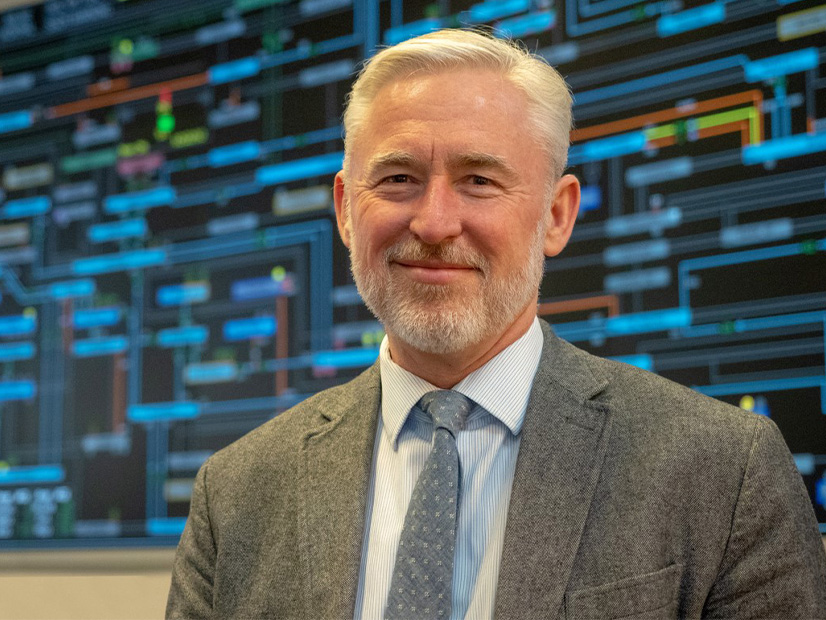BURLINGTON, Vt. — Gordon van Welie is facing another winter full of worry as the head of ISO-NE, tasked with keeping the lights on amid the possibility that extreme weather will threaten a grid that’s straining to catch up to clean energy policy in the region.
In an interview with RTO Insider after a FERC meeting in Vermont that brought all sides of the New England energy sector into a room to talk about the region’s winter issues, van Welie shared his views on the clash between reliability and the clean energy transition. (See FERC Comes to Vermont and Leaves with a New England-sized Headache.)
“The problem is, we should absolutely build all the renewables as fast as we possibly can, hook them up to the system and then let the stuff go that we don’t want. But we’re doing it the other way around,” van Welie said. “We’re shutting stuff down before the new stuff’s built.”
The clean energy transition isn’t being conducted with “completely rational behavior” right now, he said. His call has been for a “deliberate, measured” and incremental move to get away from fossil fuels.
“That’s not the way things are playing out at the moment.”
In his more than 20 years as head of the grid operator, van Welie said he’s developed a keen understanding of the economic theories underpinning the region’s markets; the regulatory paradigms; and the politics that shape his job. It’s a far cry from his background as an engineer working on smart grid technology. And the problems he’s trying to solve now are bigger and thornier than ever.
“Sometimes I feel like we’re trying to thread a rope through a needle in this region. It’s very hard to find the solution that is going to satisfy everyone,” van Welie said.
Last winter, van Welie and his staff launched a public awareness campaign, using media interviews to warn about the thin margins on New England’s grid in the winter in the case of extended cold weather. ISO-NE is planning to do so again this year, despite accusations from some critics that the as-of-yet unfulfilled warnings of rolling outages are “fear-mongering.” (See ISO-NE: New England Could Face Load Shed in Cold Snaps.)
“What would you do in our shoes?” van Welie asked. “You know there’s a risk, and if it goes bad, it’s going to impact 15 million people. Do you hide it and say, ‘We’ll deal with it when it comes?’ Or do you talk about it and say, ‘There’s a problem here that we need society to be aware of?’”
The grid operator is planning a few changes to its strategy this year, including to emphasize that under most circumstances, it still won’t have to dip into the most extreme operating procedures involving load shed. ISO-NE is also doing a tabletop exercise with utilities to run through the scenario of an energy shortfall.
“It’s not just about CYA [covering your ass]. It’s so that people know and can take precautions,” van Welie said. “Part of what we’re saying is that we think we’re short. And so that’s a problem for society. And I’d rather have society know that in advance than for them to find out after the fact, and say, ‘Why didn’t you tell us? We could have done something.’”
No Plans to Step down
The tenuous state of the region’s grid means that van Welie, who joined the organization in 2000 and was named its president and CEO in 2001, isn’t ready to start thinking about retiring.
“The thing I would like to do is to try and leave behind something that’s in decent shape; set it up on a solid foundation,” he said. “I don’t feel like we’re on a solid foundation now.”
Last year, van Welie laid out a four “pillar” plan to support the clean energy transition: substantial amounts of clean energy, balancing resources, energy adequacy and robust transmission.
Using a traffic light indicator to gauge progress, he said transmission is green for now, renewables and balancing resources are yellow, and energy adequacy is red.
“I’d like to get things back to yellows and greens, as opposed to reds,” van Welie said. “It’s going to take time. We might, 10 years from now, be still having the same conversation.”


